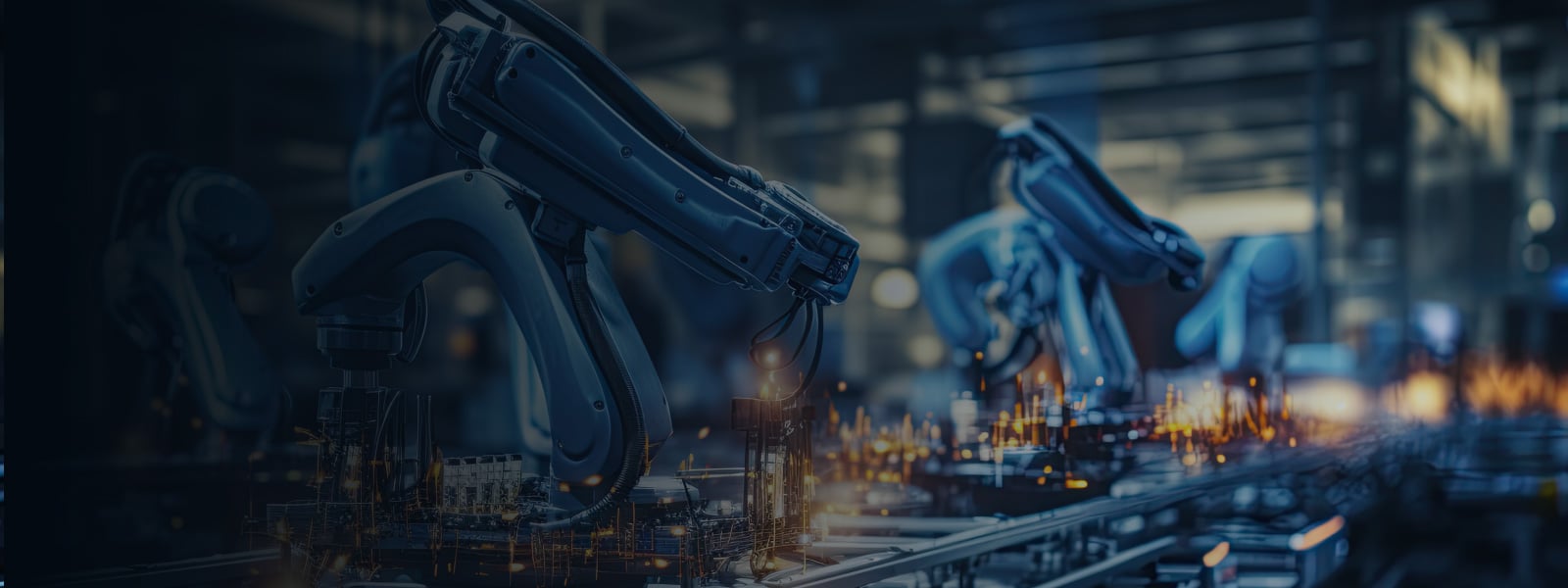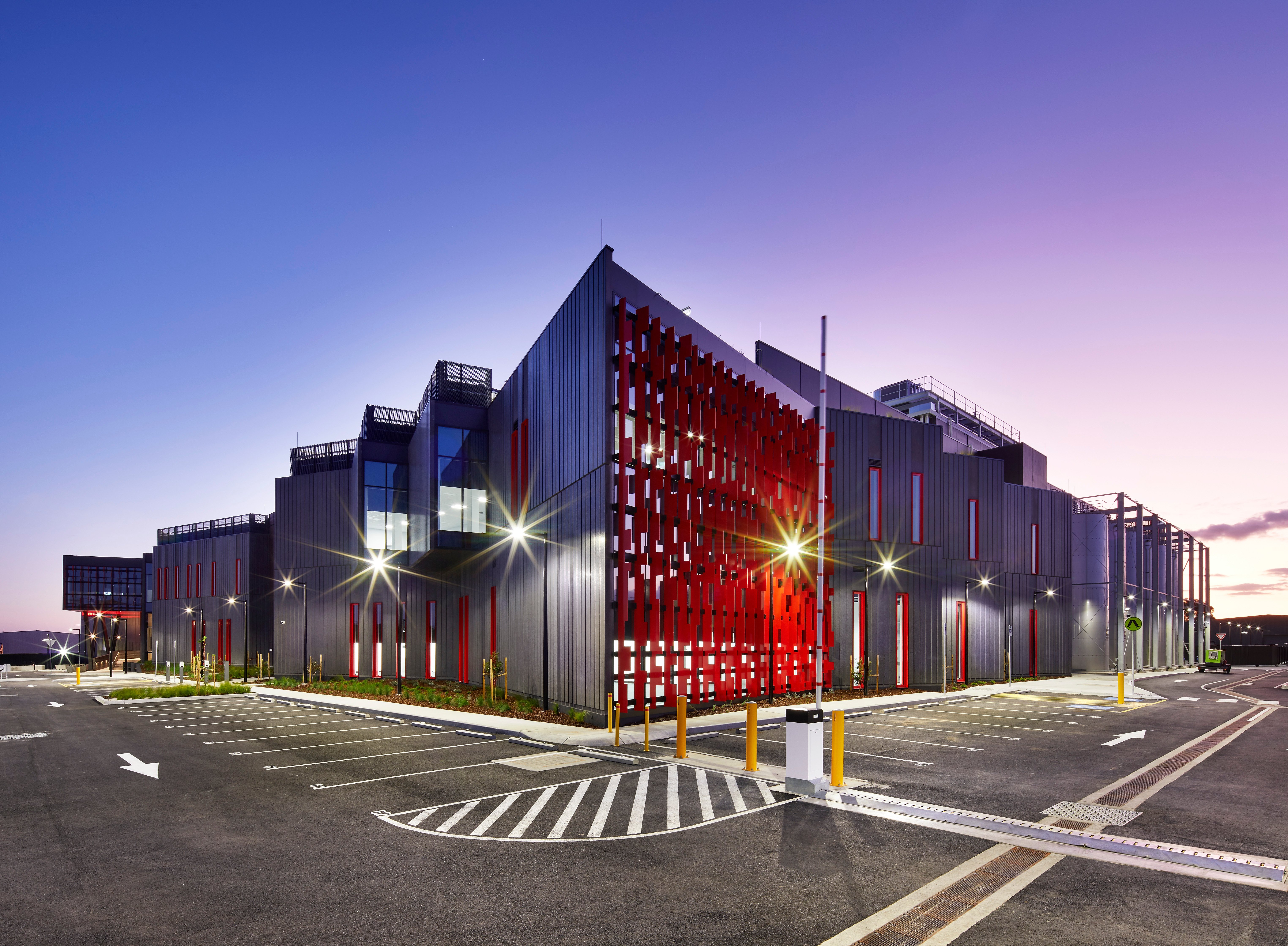Introduction
The rise of artificial intelligence (AI) is reshaping data centres in every country, with this technology projected to reach a global market value of $2-4 trillion USD by 2030. Purpose-built data centres are crucial to meet the growing demand for AI applications and workloads, especially as AI language models like ChatGPT gain prominence. As our reliance on AI, particularly generative AI (GenAI), increases and its compute intensity doubles every six to 10 months, the need for adaptable, more flexible and bespoke digital infrastructure becomes much clearer. This article explores the pivotal role of data centres in supporting the globally recognised 4th industrial revolution; the AI revolution.
AI Sparks Data Centres and the Digital Reawakening
In the last five years, we've witnessed a monumental shift in how we live, work, and interact, thanks largely to human frailty combined with advancements in digital technology. Central to this transformation is Artificial Intelligence (AI) – a field that, through its promise and complexity, has captured the imagination of scientists, organisations, and the public alike. AI, in essence, simulates human intelligence processes through advanced computer systems, such as the DGX platforms recently developed by NVIDIA. These processes include learning, reasoning, and self-correction.
Parallel to the rise of AI is the evolution of data centres, the industrial infrastructure where AI is produced. These are not just physical or virtual spaces where data is stored; they are dynamic, energy-intensive ecosystems that power, process, and facilitate the rapid flow of information around the globe.
In recent years, most economies have been riding a technological whirlwind, with Artificial Intelligence (AI) at the eye of the storm. This isn't just tech’ evolving; it's a fundamental shift in how humans exist, work, and connect. AI is teaching computers to mimic human thinking, from learning and reasoning to correcting their own mistakes. It's a thrilling frontier that has everyone from tech’ giants to everyday communities paying attention.
Alongside AI's meteoric rise, data centres are undergoing their own revolution. Far from being mere digital storage lockers, these facilities are now defined as mission critical to a nations’ economic value and are perceived as the powerhouses of the digital world. They're where the production of AI happens, alive and connected to processing activity as they inter-connect, manage and move data at breathtaking speeds around the world.
Bill Gates, a titan in the tech field, has likened AI's impact to some of the most significant technological leaps of the past — the birth of the graphical user interface, the spread of mobile phones, and the dawn of the internet. It's a bold comparison, but when you see the pace at which AI is advancing, it doesn't seem far-fetched.
To put the rapid adoption of AI into perspective, consider ChatGPT's explosive growth. Tim Church of Morgan Stanley highlighted an astonishing fact: ChatGPT reached a million users in just five days, a milestone that took Netflix over three years to achieve. It's a clear sign of how eagerly the world is embracing AI.
But this acceleration brings its challenges, particularly in managing and processing the vast oceans of data AI relies upon. Data centres, the brain behind AI's brawn, need to be 100% resilient and 24/7 operational, ensuring data is stored, processed, and transferred efficiently when requested. As AI's capabilities and demands grow, the most critical need is to ensure data centre infrastructure remains aligned, ensuring it can handle whatever AI workloads and operational requirements are thrown its’ way. It's a formidable engineering task but one that's essential for harnessing the full potential of AI in reshaping our world.
Data Centres and the Heartbeat of AI
At the core of AI's functionality is its insatiable appetite for processing data and the associated need for computational power. Underpinning the delivery of this significant digital journey is the data centre: the powerhouse facility equipped with rows upon rows of servers, storage systems, and complex networks that manage the flow of information. They enable and host critical digital infrastructure and are therefore the silent workhorses, supporting a diverse range of workloads to perform every search query, transaction, and digital interaction, making them indispensable to the AI revolution.
However, the connection between AI and data centres goes beyond just storing and processing data, especially for tasks like training neural networks, which involves teaching an AI model to make decisions based on data. It is at this computational nexus where the specialised hardware and infrastructure components hosted within data centres are most critical.
Understanding the Foundations of AI Computing: CPUs, GPUs, TPUs, and the AI Lifecycle
The efficiency of AI depends heavily on the processing power available, primarily facilitated by three types of processors: Graphics Processing Units (GPUs), Central Processing Units (CPUs), and Tensor Processing Units (TPUs).
-
GPUs, are adept at handling multiple tasks simultaneously, making them ideal for the parallel processing needs of AI model training.
-
CPUs, the generalists in the hardware world, offer flexibility but may not match the speed or efficiency of GPUs for specific AI tasks.
-
TPUs, a brainchild of Google, are custom-designed to accelerate AI workloads, offering unmatched speed and efficiency for both training and inference phases of AI development.
The AI Lifecycle: Training versus Inference
Understanding AI's demands on data centres requires distinguishing between two key phases: training and inference. Training an AI model is aligned to educating it, requiring vast amounts of data and extensive computational resources. Inference, on the other hand, is the application phase where the trained model makes predictions or decisions based on new data. This phase is generally less resource intensive but requires utmost efficiency and speed to meet often real-time processing needs.
Challenges and Innovations in Integrating AI into Data Centres
The integration of artificial intelligence (AI) into data centres presents a myriad of challenges alongside the opportunities for innovation. From addressing significant energy consumption and heat generation to ensuring seamless connectivity and robust security measures, data centres are at the forefront in adapting to the computational demands of AI workloads. In this chapter, several of the key challenges faced by AI-ready data centres are explored, with many new approaches demonstrating both innovation and simplification in the ongoing evolution of AI infrastructure.
Power
In the world of AI, computational power is paramount. AI training processes, involving complex calculations and data processing, rely heavily on high-performance computing (HPC) infrastructure. To meet these intensive demands, data centres must ensure a reliable and sufficient or high-density power supply. This entails investing in robust power distribution systems, backup power generators, and energy-efficient hardware to optimise power usage at scale and ensure uninterrupted operations during peak AI workloads.
Connectivity
Seamless data transfer is essential for AI training and inference tasks. Data centres require high-speed and low-latency network connectivity to facilitate the efficient exchange of large datasets necessary for training AI models. Additionally, seamless connectivity is crucial for distributing trained models and receiving real-time data for inference tasks. Advanced networking technologies such as high-speed optical fibre and low-latency inter-connected networks play a vital role in ensuring efficient data transfer and communication between servers.
Cooling
AI training processes generate significant heat due to their computational requirements and power intensity, necessitating effective cooling systems to maintain optimal operating temperatures within data hall. Efficient cooling infrastructure, including precision air conditioning units, liquid cooling systems, and hot/cold aisle containment, are crucial for dissipating heat generated by AI workloads and preventing equipment overheating. Moreover, implementing energy-efficient cooling solutions helps minimise environmental impact and operational costs associated with cooling AI infrastructure.
Scalability and Security
As AI workloads continue to grow in complexity and scale, data centres must be scalable to accommodate these increasing demands. Scalability ensures dynamic resource allocation without compromising performance or availability, allowing data centres to handle peak AI workloads effectively. Additionally, robust security measures, such as encryption, access controls, and intrusion detection systems, are essential to safeguard AI training data and models from unauthorised access or cyber threats, ensuring data integrity and confidentiality.
Opportunities for Innovation
Yet, within these challenges lie opportunities for innovation and advancement. The quest for more sustainable and energy-efficient data centres has spurred developments in cooling technologies, such as liquid immersion cooling, and advancements in infrastructure design. Furthermore, the demand for AI-powered services propels the evolution of data centre technologies, pushing the boundaries of what's possible in processing speed and data storage capacity.
By excelling in these areas and seizing opportunities for innovation, data centres can effectively support the integration of AI, ensuring optimal performance, reliability, and efficiency in handling AI workloads. Addressing scalability and security considerations alongside power, connectivity, and cooling requirements provides a comprehensive and reliable infrastructure capability to support AI models effectively.
Navigating the Intersection between AI and Data Centres
As industry continues to guide, explore, and develop AI, the symbiotic relationship between AI and data centres continues to evolve. The complex challenges of today become the stepping stones for tomorrow's innovations, driving the continuous improvement of data centre operations, energy efficiency, and the AI capabilities they support.
The integration of AI into data centre management itself offers a view to the future, where AI could optimise its own operational efficiency, predict maintenance needs, and dynamically allocate resources based on demand.
In conclusion, as AI continues to redefine the boundaries of possibility, data centres stand as the critical infrastructure enabling this transformation. The interplay between AI and data centres highlights a dynamic relationship where overcoming challenges spur innovation, and opportunities deliver technology advancements. As we navigate through this digital renaissance, the evolution of data centres in tandem with AI technologies represents not just a technological shift but a fundamental change in how we perceive and interact with the digital world.
The journey ahead is paved with advancements in processor technology, cooling solutions, and energy efficiency, each playing a pivotal role in the sustainable growth of AI applications. The development of TPUs by Google exemplifies the relentless pursuit of processing efficiency, a testament to the industry's commitment to pushing the boundaries of what's possible.
In the face of rising energy demands and environmental concerns, the future of data centres lies in the balance between managing innovation whilst ensuring new benchmarks for sustainability. Strategies for renewable energy integration, advanced cooling methods, and infrastructure optimization are not just operational necessities; they are proving to be considered as ethical imperatives.
Moreover, the distinction between training and inference in AI underscores the nuanced needs of AI applications, highlighting the importance of tailored solutions in data centre operations. This nuanced understanding is crucial for optimizing resources, reducing costs, and ensuring the seamless integration of AI into our lives.
As we stand on the threshold of this 4th industrial revolution, the fusion of AI and data centres continues to shape the foundation of our digital economy. The challenges are significant, yet the opportunities are boundless. The road ahead calls for collaboration amongst technologists, environmentalists, and government policymakers to forge a path that leverages the power of AI and data centres while ensuring a sustainable and inclusive digital future for our planet.
Final Thoughts
The exploration of AI's impact on data centres reveals a landscape filled with challenges in addition to a plethora of opportunity. From the silicon roots of processor technologies to the digital oceans formed by global data flows, this nexus of AI and data centres is where the future of technology, society, and our collective potential will be defined. As we continue to push the boundaries of what's possible, we do so with the knowledge that in the heart of every data centre, lies the existence of human ingenuity—a testament to our relentless pursuit of progress.
Get in contact with NEXTDC to support your AI Digital Infrastructure needs.


